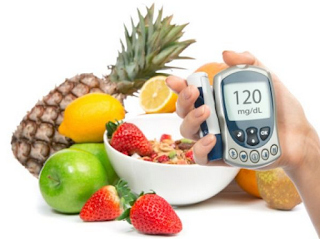How to control diabetes with diet and exercise
How to control diabetes with diet and exercise-Relating to sort 2
diabetes, you need food plan and train targets that encourage you to
succeed-not ones that set you up to fail, says Ann Goebel-Fabbri, PhD, a
psychologist and investigator at the Joslin Diabetes Heart, in Boston.
"I think objectives have to be small and effectively spelled out for people. Everybody has the experience of going to a well being practitioner and being informed one thing vague: 'You recognize, you really should lose weight.' What does that mean? Goals must be damaged down into small nuts and bolts," she says.
Exercise is bound to be in your to-do checklist in case you have diabetes. Get started with these go-to ideas:
"I think objectives have to be small and effectively spelled out for people. Everybody has the experience of going to a well being practitioner and being informed one thing vague: 'You recognize, you really should lose weight.' What does that mean? Goals must be damaged down into small nuts and bolts," she says.
Exercise is bound to be in your to-do checklist in case you have diabetes. Get started with these go-to ideas:
How to control diabetes with diet and exercise
1. Make a list of enjoyable activities. You've a number of options, and you don't have to go to a gym. What sounds good? Take into consideration one thing you've got always wished to attempt or something you enjoyed in the past. Sports activities, dancing, yoga, walking, and swimming are a number of ideas. Something that raises your heart charge counts.
2. Get your doctor's OK. Let them know what you want to do. They can be sure you're ready for it. They will additionally verify to see if you should change your meals, insulin, or diabetes medicines. Your physician can also let you recognize if the time of day you train matters.
3. Test your blood sugar. Ask your doctor if you ought to check it before exercise. If you plan to work out for greater than an hour, examine your blood sugar levels commonly during your workout, so you’ll know if you happen to want a snack. Check your blood sugar after each workout, as a way to modify if needed.
4. Carry carbs. At all times preserve a small carbohydrate snack, like fruit or a fruit drink, available in case your blood sugar will get low.
5. Ease into it. Should you're not lively now, begin with 10 minutes of train at a time. Gradually work up to 30 minutes a day.
6. Energy train at the least twice a week. It will possibly improve blood sugar control. You may raise weights or work with resistance bands. Or you are able to do strikes like push-ups, lunges, and squats, which use your personal physique weight.
7. Make it a habit. Train, eat, and take your medicines at the identical time every day to stop low blood sugar, additionally known as hypoglycemia.
8. Go public. Work out with somebody who is aware of you have got diabetes and knows what to do if your blood sugar gets too low. It's more fun, too. Additionally wear a medical identification tag, or carry a card that says you may have diabetes, just in case.
9. Be good to your feet. Wear athletic footwear which are in good shape and are the correct type on your activity. For example, don't jog in tennis sneakers, as a result of your foot needs a different type of support while you run. Examine and clean your feet daily. Let your doctor know if you notice any new foot problems.
10. Hydrate. Drink water earlier than, throughout, and after exercise.
11. Cease if something all of the sudden hurts. In case your muscle mass are mildly sore, that's normal. Sudden pain isn't. You are not more likely to get injured until you do an excessive amount of, too soon.
10 Health Benefits You will Get
Bear in mind how a lot exercise does for you, together with:
Helps your physique use insulin, which controls your blood sugar
Burns extra body fat
Strengthens muscles and bones
Lowers blood pressure
Cuts LDL (“bad”) cholesterol
Raises HDL (“good”) ldl cholesterol
Improves blood flow
Makes heart illness and stroke less seemingly
Boosts vitality and temper
Tames stress
How Does Exercise Affect Blood Sugar?
Whenever you train, your physique wants extra energy from blood sugar, also referred to as glucose.
Whenever you do something shortly, like a dash to catch the bus, your muscles and liver release glucose for fuel.
The massive payoff comes if you do reasonable train for a longer time, like a hike. Your muscle mass take up far more glucose if you do that. This helps decrease your blood sugar levels.
In the event you're doing intense train, your blood sugar levels might rise, quickly, after you stop.

Comments
Post a Comment
Friends Buy Products my site Product Link is available